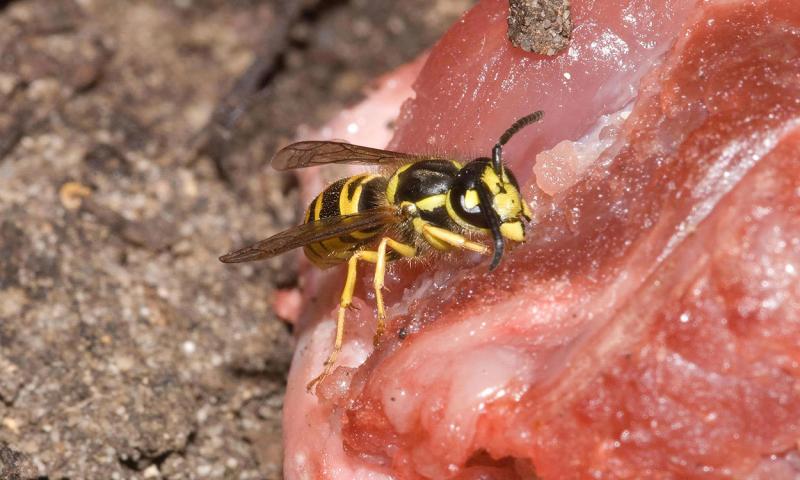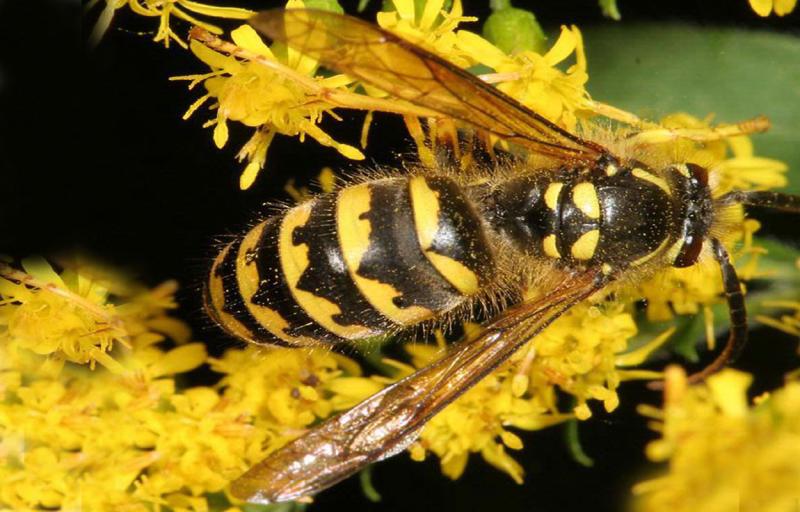Written collaboratively by Adam Varenhorst, Amanda Bachmann, Philip Rozeboom, Brad McManus, and Patrick Wagner.
Originally Submitted: September 7, 2023
Fall is here, even if the recent temperatures haven’t felt like fall. Some notable insects are becoming more apparent as their nest populations reach their seasonal peak. One of those groups of insects is the yellowjacket wasps.
If you have a garden, fruit trees, or outdoor dumpsters, you are likely to encounter yellowjackets that are in search of food. In backyard gardens and orchards, the yellowjackets are attracted to the odors of decaying produce from ground falls, as well as overripe or damaged produce.

For the same reason, yellowjackets are attracted to dumpsters, garbage cans, and areas where people regularly consume food outdoors (outdoor seating at restaurants, at home patios, or picnics).
Although you may encounter large populations of yellowjackets that are in search of food, it is important to remember that these populations are not purposefully looking to sting humans they encounter. In some instances, yellowjackets are reported trying to consume food that someone is still holding.
It is important to remember that yellowjackets are capable of producing a painful sting. Most stings occur when humans or animals get close to the entrance of their nests, which can be underground, in wood piles, or inside buildings and walls if an opening was available. Yellowjackets are very defensive of their nests, and this becomes more obvious as the nest population grows. If you are observing yellowjackets, it means that a nest is within a few hundred yards of the observation area. This does not mean you should seek out the nest to destroy it, but it is a reminder to be cautious when moving lumber or cleaning up a yard.
During the early summer, yellowjackets are predatory and consume caterpillars and other insects. Later in the season, they seek out items that are higher in sugar content (for example, fruit trees).
Identification

Yellowjacket adults are approximately half of an inch in length, with shiny black and yellow markings on their bodies (Figure 1). The nests (not pictured) vary in size and shape based on where they are located, but all are paper nests and are generally concealed.
Management
Yellowjackets do not routinely require management unless they are nesting in or around entrances to homes or regularly used buildings. The nests are annual, and the only survivors are the queens that will start new nests the following spring (not necessarily in the same location). If a nest is located within a manmade structure, the yellowjackets may persist longer than normal into the fall but will eventually run out of food. As with other insects, always make sure that you examine the structure for any openings that would allow pests to enter the home.


